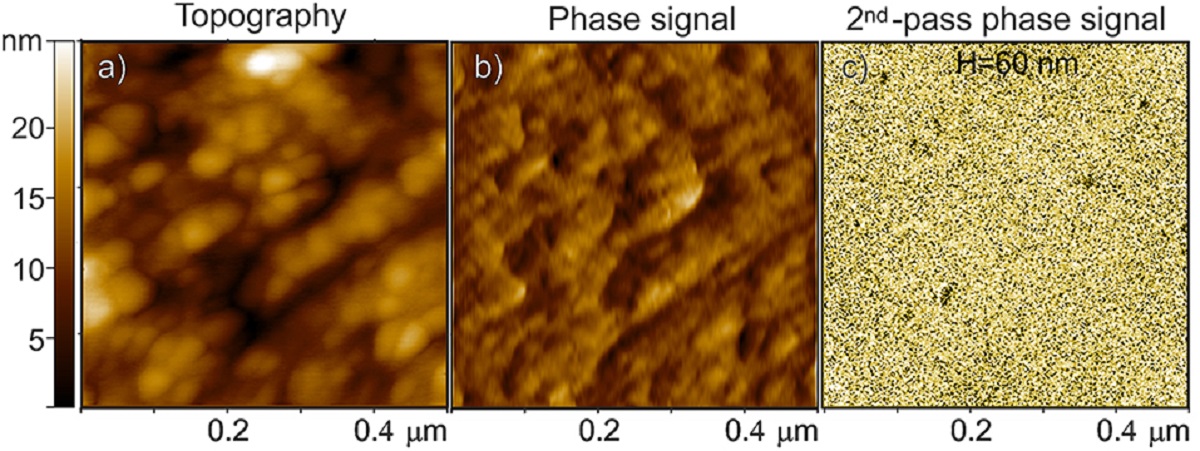In their research paper “From Polymer to Magnetic Porous Carbon Spheres: Combined Microscopy, Spectroscopy, and Porosity Studies” Federico Cesano, Sara Cravanzola, Valentina Brunella, Alessandro Damin and Domenica Scarano, after having first reported the preparation of polymer waste-derived microporous carbon microspheres (SBET ~800 m2/g) 100–300 μm in size, investigate the morphology, porous texture and the surface properties of carbon and of magnetic carbon microspheres by multiple techniques.*
The multi-technique methodology they used aims at an extensive description of the different characteristics of activated carbons with magnetic properties.
For the Atomic Force Microscopy described in this paper NANOSENSORS™ SSS-MFMR AFM probes for high resolution magnetic force imaging were used for the topography images as well as the MFM imaging.

Fe3O4-based carbon microspheres: (a) AFM topography, (b) the related phase signal, and (c) MFM phase shift images at H = 60 nm lift height obtained in a second scan. The phase shift range in (c) is ~ 0.6 m°. e description
*Federico Cesano, Sara Cravanzola, Valentina Brunella, Alessandro Damin and Domenica Scarano
From Polymer to Magnetic Porous Carbon Spheres: Combined Microscopy, Spectroscopy, and Porosity Studies
Frontiers in Materials 6:84 (2019)
DOI: https://doi.org/10.3389/fmats.2019.00084
Please follow this external link to read the full research article: https://www.frontiersin.org/articles/10.3389/fmats.2019.00084/full
Open Access: The article « From Polymer to Magnetic Porous Carbon Spheres: Combined Microscopy, Spectroscopy, and Porosity Studies” by Federico Cesano, Sara Cravanzola, Valentina Brunella, Alessandro Damin and Domenica Scarano which is cited above is licensed under a Creative Commons Attribution 4.0 International License, which permits use, sharing, adaptation, distribution and reproduction in any medium or format, as long as you give appropriate credit to the original author(s) and the source, provide a link to the Creative Commons license, and indicate if changes were made. The images or other third party material in this article are included in the article’s Creative Commons license, unless indicated otherwise in a credit line to the material. If material is not included in the article’s Creative Commons license and your intended use is not permitted by statutory regulation or exceeds the permitted use, you will need to obtain permission directly from the copyright holder. To view a copy of this license, visit http://creativecommons.org/licenses/by/4.0/.